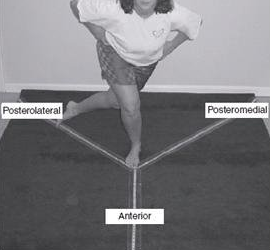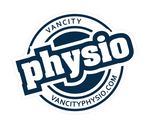With summer reaching its peak for the year here in B.C., Canada, there hasn’t been a better time to do some hiking and trail exploration than now. Recently, I decided to do an easy trail walk with a couple of friends and realized how often there were small potholes every few meters, or large, uneven and awkward rocks were scattered amidst the trail path. Soon we found ourselves unconsciously performing balance exercises, which brings me to the topic of this article.
Ankle stability exercises are important for improving balance, strength, and proprioception (awareness of body position) around the ankle joint. Many of us have experienced ankle injuries and sprains at some point in our lives, and those who are fortunate enough not to have experienced such an injury – well, we won’t talk about them too much here.
But, if you’ve rolled your ankles in the past, want to strengthen your ankles, or understand how the ankle works a bit more, here are some physiotherapy-related ankle stability exercises:
Ankle Strengthening Exercises
1. Star Excursion Balance Test:

The Star Excursion Balance Test (SEBT) is one of my favourite dynamic balance assessment tools and functions also as an exercise to work on ankle strength and stability.
Simply reach as far along each line as possible, tapping the foot down at the furthest point, whilst staying balanced on your other foot. Your standing leg should be slightly bent at the knee. Keeping the hands at the hips is optional. Attempt to touch each corner 3 times per set and progressively increase as appropriate.
2. Calf Raises:
The second tip is to perform calf raises to strengthen the posterior calf complex. The ability for you to control your ankle relies heavily on the strength and capacity of two muscles in your calf, called the gastrocnemius and the soleus. These two muscles work to allow you to walk, run, jump, and perform many other daily tasks.
To start strengthening them, perform 10-15 repetitions in 2 sets of double-leg calf raises.
They look like this: (see below). Start by performing them on level ground, and once you can perform 15-20 repetitions with relative ease, progress to a small step platform for increased difficulty.

3. Single Leg Balance (Static):
- Stand on one leg with your knee slightly bent.
- Maintain your balance for 30-60 seconds.
- Progress by closing your eyes or standing on a foam pad to challenge proprioception.
4. Single Leg Balance (Dynamic):
- Stand on one leg and slowly move your other leg in different directions (front, back, side).
- Maintain balance while performing these movements.
- Aim for controlled movements without touching the ground with your moving leg.
5. Calf Raises:
- Stand on both feet and rise up onto your toes.
- Slowly lower yourself back down.
- Perform 2-3 sets of 15-20 repetitions.
- Progress by doing calf raises on one leg at a time.
6. Ankle Alphabet:
- Sit on a chair with your legs extended or stand with one foot slightly lifted off the ground.
- Imagine you are drawing the letters of the alphabet with your big toe.
- Perform this exercise slowly and with control to maximize ankle range of motion.
7. Ankle Inversion and Eversion with Resistance Band:
- Secure one end of a resistance band to a sturdy object and loop the other end around your foot.
- Move your foot inward (inversion) and outward (eversion) against the resistance of the band.
- Perform 2-3 sets of 15-20 repetitions for each direction.
8. Heel-to-Toe Walk:
- Walk in a straight line, placing your heel directly in front of your toes with each step.
- This exercise challenges your balance and improves ankle coordination.
9. Single Leg Squats (Partial):
- Stand on one leg and slowly lower yourself into a partial squat, bending your knee slightly.
- Keep your trunk upright and use your arms for balance.
- Perform 2-3 sets of 10-15 repetitions on each leg.
10. Balance Board Exercises:
- Stand on a balance board or wobble board with both feet.
- Maintain your balance while keeping the board stable.
- Progress by performing squats or gentle movements while balancing on the board.
11. Proprioceptive Neuromuscular Facilitation (PNF) Exercises:
- Sit on the ground with your legs extended.
- Use a resistance band around your foot and perform resisted dorsiflexion, plantarflexion, inversion, and eversion movements.
- This exercise helps improve muscle strength and proprioception around the ankle joint.
12. Step-Ups:
- Stand facing a step or small platform.
- Step up onto the platform with one foot, then step down.
- Alternate legs and repeat for 2-3 sets of 10-15 repetitions.
Enjoy these tips to get started on your journey to improve your calf and ankle balance. Remember to talk to your physiotherapist or health care practitioner before beginning an exercise program.
Whether you’re suffering from an injury or hoping to improve your fitness overall, get in touch with us. Our team at VanCity Physio is ready to help you crush your goals, whatever they may be.


